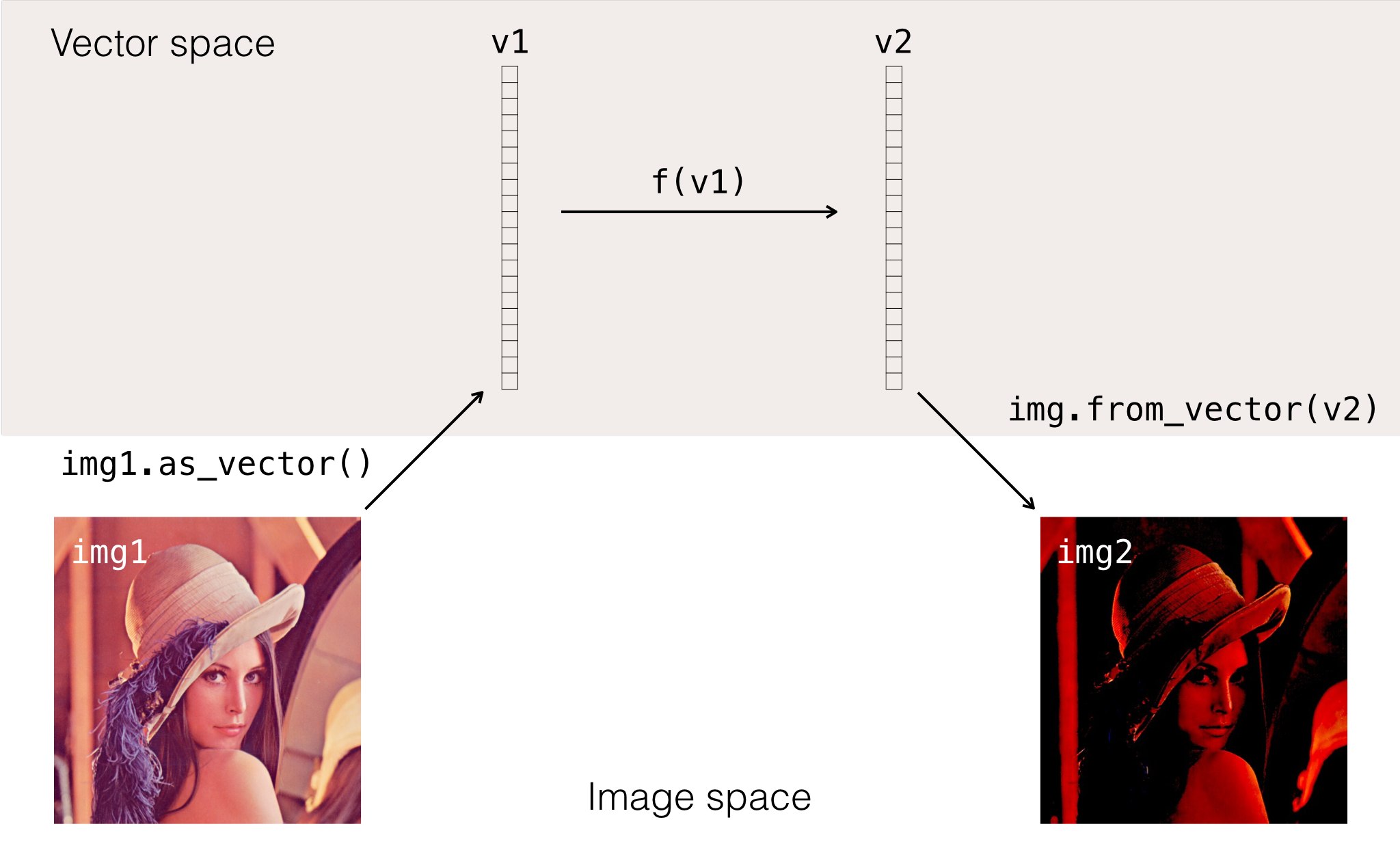Vectorizing
1. Vectorizing Objects
Computer Vision algorithms are frequently formulated as linear algebra problems in a high dimensional space, where each asset is stripped into a vector. In this high dimensional space we may perform any number of operations, but normally we can't stay in this space for the whole algorithm - we normally have to recast the vector back into it's original domain in order to perform other operations.
An example of this might be seen with images, where the gradient of the intensity values of an image needs to be taken. This is a complex problem to solve in a vector space representation of the image, but trivial to solve in the image domain.
menpo bridges the gap by naively supporting bi-directional vectorisation of it's types through the Vectorizable interface. Through this, any type can be safely and efficiently converted to a vector form and back again. You'll find the key methods of Vectorizable are extensively used in menpo. They are
as_vector()- generate a vector from one of our types.from_vector()- rebuild one of our types from a vectorfrom_vector_inplace()- alter an object inplace to take on the new state

f() is performed on it's vector
representation. Afterwards the vector is converted the back into an image.
The vector operation is completely general, and could have equally been
performed on some spatial data.
2. Key Points
Each type defines it's own form of vectorization. Calling
as_vector()on aImagereturns all of the pixels in a single strip, whilst on aMaskedImageonly the true pixels are returned. This distinction means that much ofmenpo's image algorithms work equally well with masked or unmasked data - it's theVectorizableinterface that abstracts away the difference between the two.Lots of things are vectorizable, not just images.
Pointcloudsand lots of transforms are too.The length of the resulting vector of a type can be found by querying the
n_parametersproperty.The vectorized form of an object does not have to be 'complete'.
from_vector()andfrom_vector_inplace()can use the object they are called on to rebuild a complete state. Think of vectorization more as a parametrization of the object, not a complete serialization.